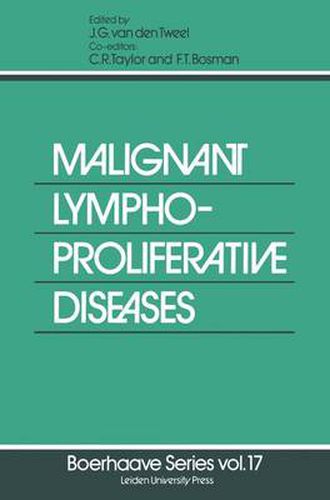Readings Newsletter
Become a Readings Member to make your shopping experience even easier.
Sign in or sign up for free!
You’re not far away from qualifying for FREE standard shipping within Australia
You’ve qualified for FREE standard shipping within Australia
The cart is loading…






This title is printed to order. This book may have been self-published. If so, we cannot guarantee the quality of the content. In the main most books will have gone through the editing process however some may not. We therefore suggest that you be aware of this before ordering this book. If in doubt check either the author or publisher’s details as we are unable to accept any returns unless they are faulty. Please contact us if you have any questions.
During the last five years the histological classification of the non-Hodgkin lymphomas has become a complex subject. Even experienced pathologists and clinicians find it increasingly difficult to make their way through the extensive and often confusing literature. The confusion is mainly due to the fact that different schools use different starting points for their classifica tion. Moreover, since many immunological problems related to classifica tion have not been completely resolved yet, even researchers who use the same approach do not always arrive at the same classification scheme. This book represents an attempt to find common elements in three most important classifications for non-Hodgkin lymphomas (the Rappaport classification, the Lukes-Collins classification and the Kiel classification) and to provide a scientific basis for the classification of this disease group. It therefore defines the two main groups of lymphocytes and their specific distribution pattern in the lymphoid organs and discusses the methods by which these cells and related tumors can be recognized. The various malignant B- and T-cell lymphomas are described in detail by expert authors, who deal not only with the morphological details, but also with the relevant clinical aspects. Finally, some related special topics are dealt with to complete the contents of this book. SECTION I BASIC CONCEPTS AND METHODOLOGY IN LYMPHOMA CLASSIFICA TION 1. HISTOPHYSIOLOGY OF NORMAL LYMPHOID TISSUE AND IMMUNE REACTIONS P. NIEUWENHUIS AND K. LENNERT INTRODUCTION Not so long ago (1) the lymphocyte was defined as: …
$9.00 standard shipping within Australia
FREE standard shipping within Australia for orders over $100.00
Express & International shipping calculated at checkout
This title is printed to order. This book may have been self-published. If so, we cannot guarantee the quality of the content. In the main most books will have gone through the editing process however some may not. We therefore suggest that you be aware of this before ordering this book. If in doubt check either the author or publisher’s details as we are unable to accept any returns unless they are faulty. Please contact us if you have any questions.
During the last five years the histological classification of the non-Hodgkin lymphomas has become a complex subject. Even experienced pathologists and clinicians find it increasingly difficult to make their way through the extensive and often confusing literature. The confusion is mainly due to the fact that different schools use different starting points for their classifica tion. Moreover, since many immunological problems related to classifica tion have not been completely resolved yet, even researchers who use the same approach do not always arrive at the same classification scheme. This book represents an attempt to find common elements in three most important classifications for non-Hodgkin lymphomas (the Rappaport classification, the Lukes-Collins classification and the Kiel classification) and to provide a scientific basis for the classification of this disease group. It therefore defines the two main groups of lymphocytes and their specific distribution pattern in the lymphoid organs and discusses the methods by which these cells and related tumors can be recognized. The various malignant B- and T-cell lymphomas are described in detail by expert authors, who deal not only with the morphological details, but also with the relevant clinical aspects. Finally, some related special topics are dealt with to complete the contents of this book. SECTION I BASIC CONCEPTS AND METHODOLOGY IN LYMPHOMA CLASSIFICA TION 1. HISTOPHYSIOLOGY OF NORMAL LYMPHOID TISSUE AND IMMUNE REACTIONS P. NIEUWENHUIS AND K. LENNERT INTRODUCTION Not so long ago (1) the lymphocyte was defined as: …